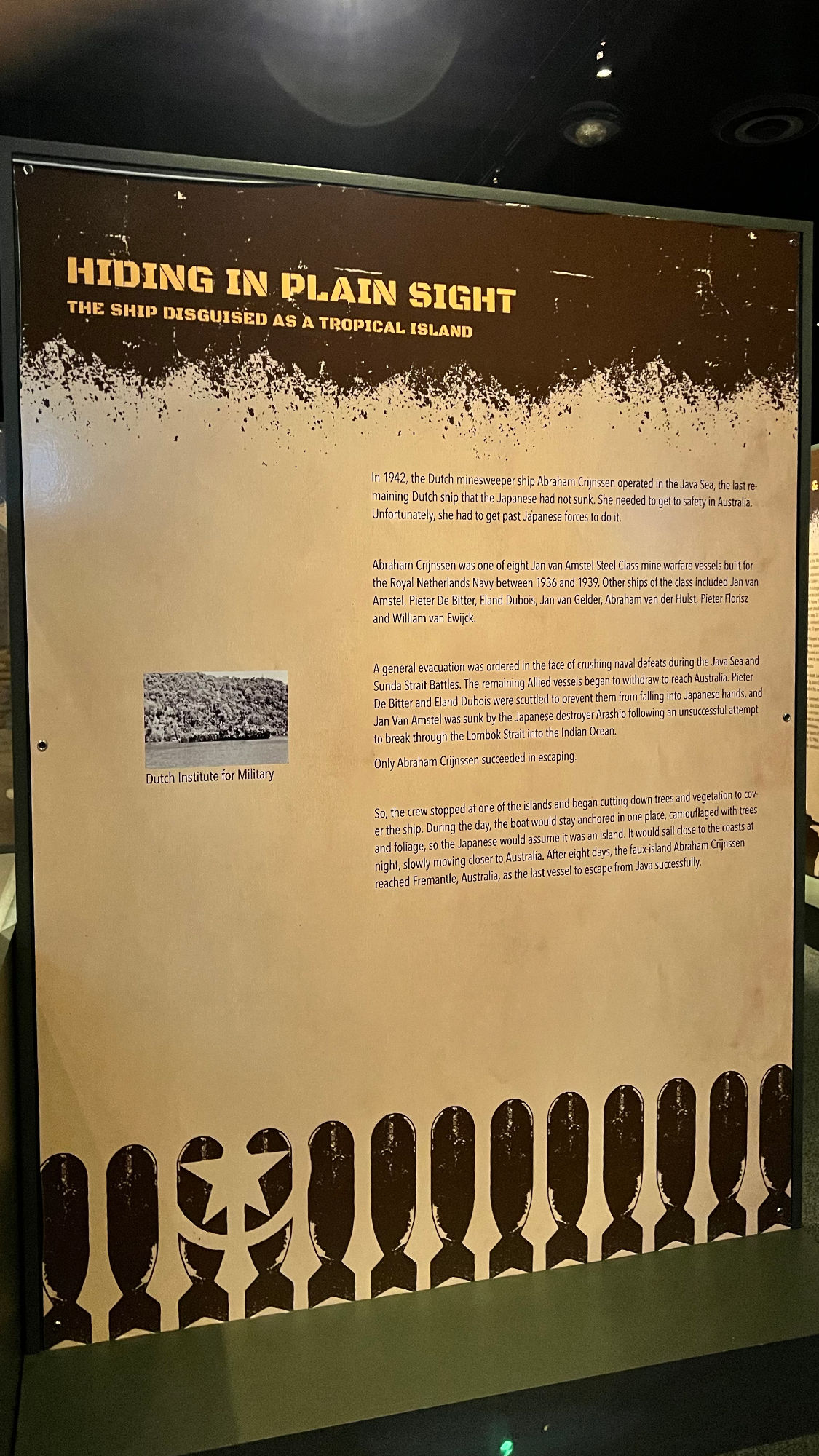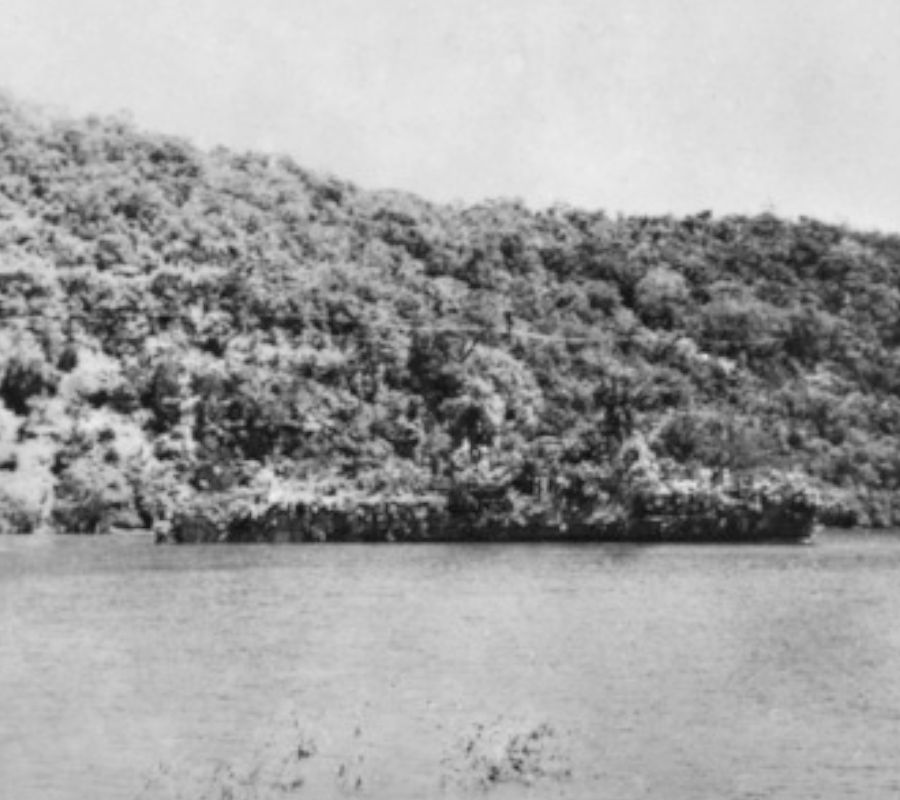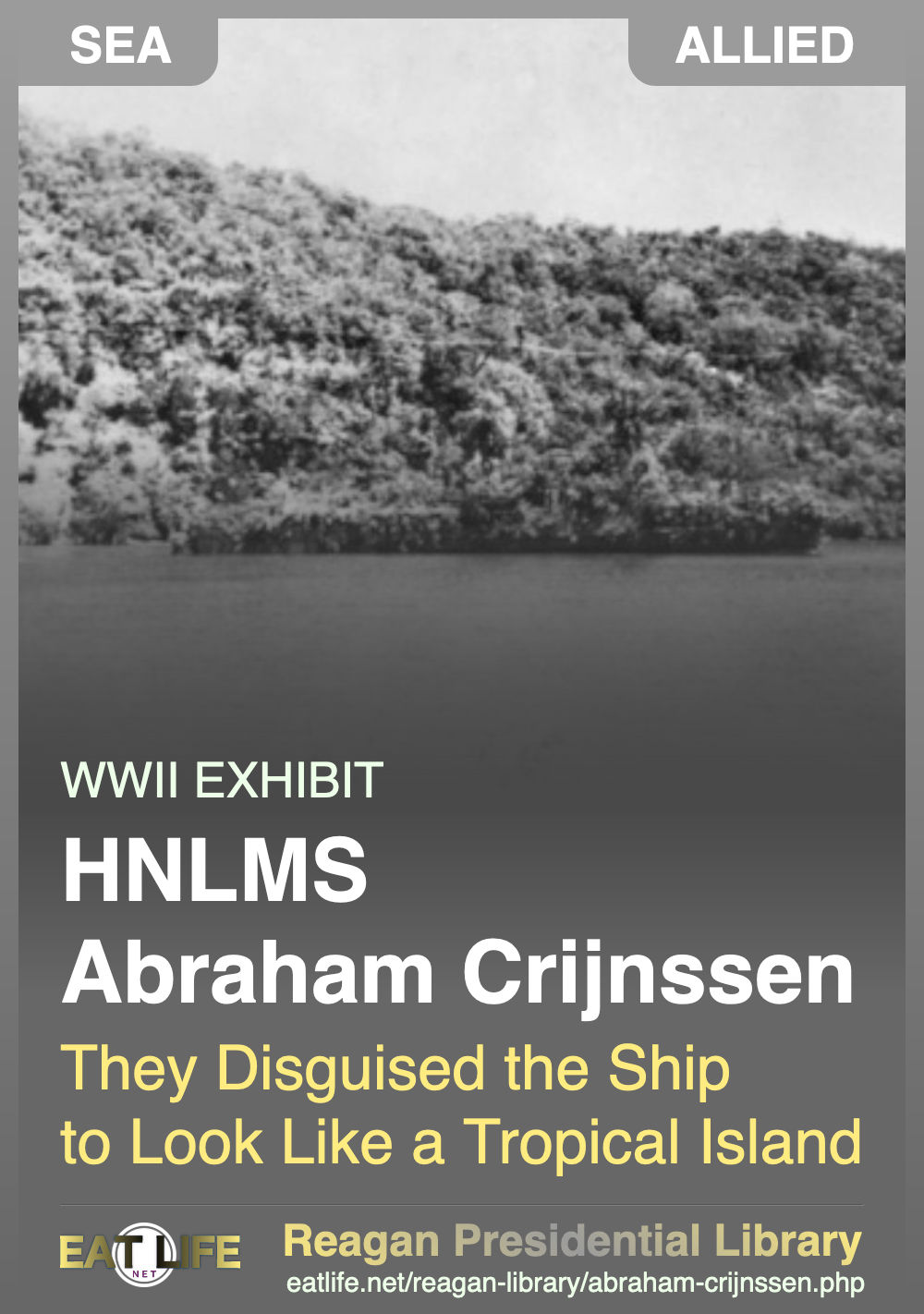The last remaining Dutch minesweeper ship that the Japanese had not sunk in the Java Sea. It needed to get past Japanese forces to safety in Australia. The crew stopped at one of the islands and cut down trees and vegetation to cover the ship. During the day, the boat would stay anchored in one place, camouflaged as an island with the trees and foliage. It would sail close to the coasts at night, slowly moving closer to Australia. After eight days, the faux - island Abraham Crinssen reached Fremantle, Australia, as the last vessel to escape from Java successfully.

The Ship Disguised as a Tropical Island
In 1942, the Dutch minesweeper ship Abraham Crijnssen operated in the Java Sea, the last remaining Dutch ship that the Japanese had not sunk. She needed to get to safety in Australia. Unfortunately, she had to get past Japanese forces to do it.
Abraham Crijnssen was one of eight Jan van Amstel Steel Class mine warfare vessels built for the Royal Netherlands Navy between 1936 and 1939. Other ships of the class included Jan van Amstel, Pieter De Bitter, Eland Dubois, Jan van Gelder, Abraham van der Hulst, Pieter Florist, and William van Ewijck.
A general evacuation was ordered in the face of crushing naval defeats during the Java Sea and Sunda Strait Battles. The remaining Allied vessels began to withdraw to reach Australia. Pieter De Bitter and Eland Dubois were scuttled to prevent them from falling into Japanese hands, and Jan Van Amstel was sunk by the Japanese destroyer Arashio following an unsuccessful attempt to break through the Lombok Strait into the Indian Ocean.
Only Abraham Crijnssen succeeded in escaping.
 So, the crew stopped at one of the islands and began cutting down trees and vegetation to cover the ship.
During the day, the boat would stay anchored in one place, camouflaged with trees and foliage, so the Japanese would assume it was an island.
It would sail close to the coasts at night, slowly moving closer to, Australia.
After eight days, the faux - island Abraham Crinssen reached Fremantle, Australia, as the last vessel to escape from Java successfully.
So, the crew stopped at one of the islands and began cutting down trees and vegetation to cover the ship.
During the day, the boat would stay anchored in one place, camouflaged with trees and foliage, so the Japanese would assume it was an island.
It would sail close to the coasts at night, slowly moving closer to, Australia.
After eight days, the faux - island Abraham Crinssen reached Fremantle, Australia, as the last vessel to escape from Java successfully.
WIKIPEDIAHNLMS Abraham Crijnssen is a Jan van Amstel-class minesweeper of the Royal Netherlands Navy
Built during the 1930s, she was based in the Netherlands East Indies when Japan attacked at the end of 1941. Ordered to retreat to Australia, the ship was disguised as a tropical island to avoid detection, and was the last Dutch ship to escape from the region.On arriving in Australia in 1942, she was commissioned into the Royal Australian Navy (RAN) as HMAS Abraham Crijnssen and operated as an anti-submarine escort. Although returned to RNN control in 1943, the ship remained in Australian waters for most of World War II.
The ship was based at Surabaya in the Netherlands East Indies when Japan invaded in 1941. Following the Allied defeats at the Battles of the Java Sea and Sunda Strait in late February 1942, all Allied ships were ordered to withdraw to Australia. Abraham Crijnssen was meant to sail with three other warships, but found herself proceeding alone.
To escape detection by Japanese aircraft (which the minesweeper did not have the armament to defend effectively against), the ship was heavily camouflaged with jungle foliage, giving the impression of a small island. Personnel cut down trees and branches from nearby islands, and arranged the cuttings to form a jungle canopy covering as much of the ship as possible. Any hull still exposed was painted to resemble rocks and cliffs. To further the illusion, the ship would remain close to shore, anchored and immobile during daylight, and only sail at night. She headed for Fremantle, Western Australia, where she arrived on 20 March 1942; Abraham Crijnssen was the last vessel to successfully escape Java, and the only ship of her class in the region to survive.







